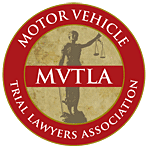How many times have you driven into a Connecticut parking lot at a public office building, office park, school, strip mall or luxury resort hotel and had to negotiate a speed bump? Have you ever considered that the speed bump that you recently drove over may be classified as a defect in the world of Connecticut premises liability law? Designing and installing a speed bump requires a utility analysis between vehicular traffic flow and pedestrian pathway safety.
The intent of the speed bump is to keep parking lots safer by decreasing the speed of traffic flow. Most motor vehicle operators do not operate their cars, trucks and utility vehicles at the recommended safety speed of 5-10 miles per hour. If you look around and take notice, average parking lot speeds driven by automobile operators often push speeds of 20 miles per hour or more. At such excessive parking lot speeds, motor vehicle accidents may occur and pedestrian can be hit and seriously injured. The Rotatori Law Firm has handled many serious pedestrian accidents on parking lots and other personal and private properties.
So what is the problem with a speed bump? Often, the parking lot or driveway that contains a speed bump fails to have a safe means of egress for the common pedestrian or traveler. Basically, parking lots or driveways are often constructed without a clearly defined pedestrian travel way. The pedestrian, left without a safe exiting travel way, will often end up walking, crossing over, stepping or negotiating the speed bump eventually tripping and falling.
A speed bump in a parking lot or walkway without a nearby safe pedestrian access way now becomes a travel way/ walkway defect to be negotiated by the pedestrian. In fact, the American Society for Testing Materials (ASTM) recommends that travel way/ walkways be flush and planar. They further recommend that there be visual cues such for speed bumps such as accent lighting, contrast paint or warning signs.
A strong argument can be made that where there exists no alternative pathway for pedestrian travel, a commercial parking lot or driveway containing a series of speed bumps fails to provide a "continuous and unobstructed path of vertical and horizontal egress travel from any occupied portion of a building or structure to a public way" as required by the 2005 Connecticut Basic Building Code. Such a building code violation anlysis should be made by a competent civil safety engineer.
Speed bumps frequently are excessively sloped. Many of the speed bump cases we have investigated have slopes in excess of 25 degrees. A speed bump should not have a slope in excess of 5 degrees. One particular speed bump premises liability fall case that our office is handling has a speed bump that is so excessively sloped, multiple vehicular gouge marks can be observed on the surface area of the raised asphalt. A measurement of the speed bump slope can be taken by any qualified investigating civil engineer. An important component of speed bump safety investigation is documenting which structural factors contributed to how the client fell.
Over head lighting when conditions are dark or at dusk also plays a major part in the overall safety of an exitway that contains a speed bump. A speed bump may also fall into a total state of disrepair. The speed bump may sink, became cracked, jagged or unevenly sloped which further contributes to the overall risk of injury to the pedestrian.
The personal injuries that The Rotatori Law Firm has seen from speed bump pedestrian trip and falls range from facial fractures, nose fractures, ankle fractures, foot injuries, arm fractures, dislocated shoulders, hand and wrist fractures, carpal tunnel syndrome, wrist trauma, distal radial fractures, low back herniated discs, cervical herniated discs, torn knee cartilage and broken hips.
While speed bumps provide some form of utility reducing motor vehicle parking lot and driveway speed, we have found that speed bumps can be quite dangerous and may, with the right applicable circumstantial facts, constitute a dangerous and defective premises liability "slip and fall" defect for the average pedestrian.




